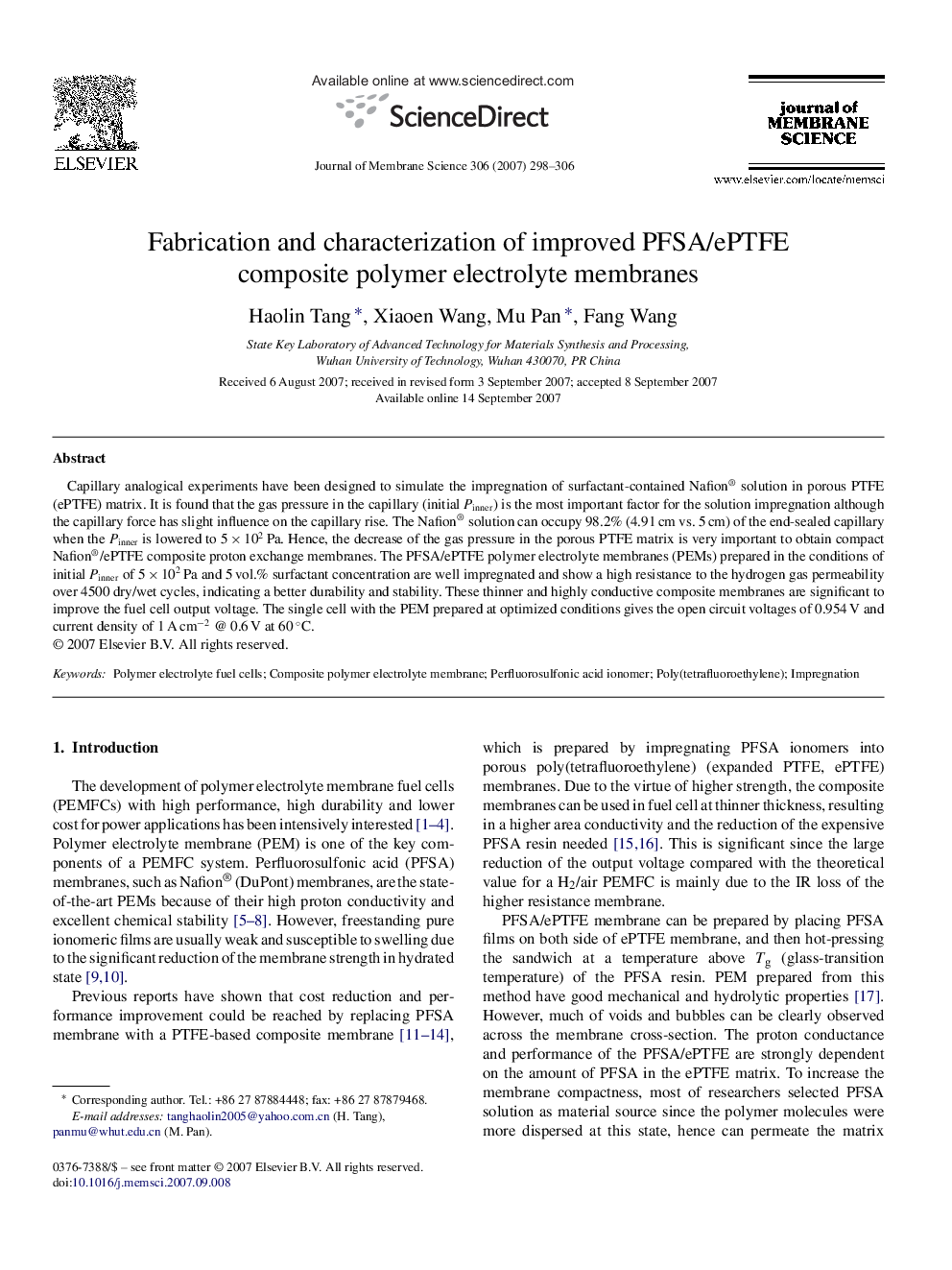| Article ID | Journal | Published Year | Pages | File Type |
|---|---|---|---|---|
| 638490 | Journal of Membrane Science | 2007 | 9 Pages |
Capillary analogical experiments have been designed to simulate the impregnation of surfactant-contained Nafion® solution in porous PTFE (ePTFE) matrix. It is found that the gas pressure in the capillary (initial Pinner) is the most important factor for the solution impregnation although the capillary force has slight influence on the capillary rise. The Nafion® solution can occupy 98.2% (4.91 cm vs. 5 cm) of the end-sealed capillary when the Pinner is lowered to 5 × 102 Pa. Hence, the decrease of the gas pressure in the porous PTFE matrix is very important to obtain compact Nafion®/ePTFE composite proton exchange membranes. The PFSA/ePTFE polymer electrolyte membranes (PEMs) prepared in the conditions of initial Pinner of 5 × 102 Pa and 5 vol.% surfactant concentration are well impregnated and show a high resistance to the hydrogen gas permeability over 4500 dry/wet cycles, indicating a better durability and stability. These thinner and highly conductive composite membranes are significant to improve the fuel cell output voltage. The single cell with the PEM prepared at optimized conditions gives the open circuit voltages of 0.954 V and current density of 1 A cm−2 @ 0.6 V at 60 °C.
